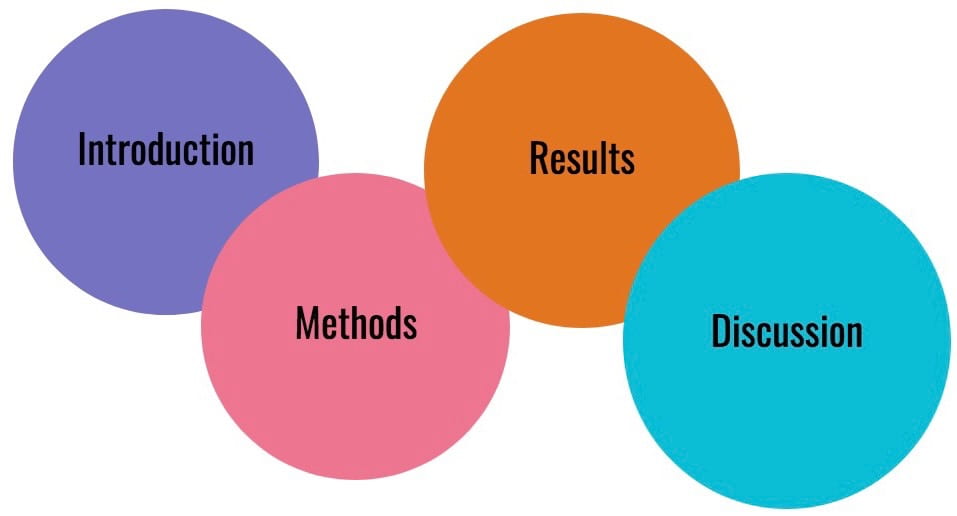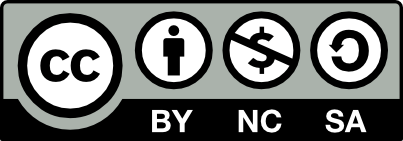Page Contents
The Purpose of a Research Article
Research articles are an essential form of communication within the sciences, and scientists write them for many reasons. Establishing your purpose for writing will help you organize your material and communicate your main message.
We may think of science and writing as separate enterprises, but they are in fact connected. Professional scientists are in many ways professional writers, so the craft of writing is very important in this field.
Sharing Your Findings
Sharing your findings with the scientific community
Scientists write research articles to share their findings with the scientific community. Research is collaborative both within and across institutions, so scientists read to be aware of what others are researching and write to share their progress with others.
Writing research articles allows scientists to do the following:
- Communicate with others in the field so that they can work together to make advances
- Share their methods to ensure that others can replicate or build upon them
- Share their results and data so that others can determine if findings are reproducible
- Show how they interpret their findings and suggest areas for future research

Sharing your findings more broadly

In addition to writing for other scientists, scientists write research articles to make their findings available to policymakers and other stakeholders. Because these people may make important decisions based on your scientific publications, you should communicate as clearly and precisely as possible.
Keep in mind that certain granting bodies have mandated that all funded research be made public as an essential fulfillment of grant obligations. If you hold public funding for your research, be sure to check your requirements for publication.
Scientific research articles undergo a peer review process. Before an article is published in a peer-reviewed journal, experts in the field review it to ensure its quality. Peer-reviewed articles are essential to demonstrate the success of a project and are necessary for researchers’ job, grant, and scholarship applications. Therefore, scientists must publish to share their research successes and to advance their careers.
Choosing a Target Journal

Before you start writing, you’ll want to identify a target journal – the academic journal that you want to publish in. Choosing a journal in advance will help you identify your target audience and determine what their expectations are as readers.
Choosing a journal can also be based on a number of factors:
- how competitive and selective the journal is
- the journal’s impact factor
- whether the journal is open access
- whether the journal is widely held by libraries around the world
- how long it takes the journal to make decisions about publications
If you’re a graduate student
Consider reaching out to your supervisor for support in identifying an appropriate target journal in your field, or investigate where your supervisor has already published their research.
NOTE: Oftentimes your advisor will choose the journal for you.

Another helpful strategy for choosing a journal is to look at the papers from your field that you tend to cite most frequently and identify where these articles are published. If you’re researching the same topics as the scientists that you’re reading, you may be able to publish in the same journals.
Once you’ve chosen a target journal, aim to read at least three papers from this publication and use them to conduct a genre analysis.
Conducting a Genre Analysis
The scientific research article has specific writing conventions and characteristics that you need to be familiar with when drafting your own article for publication. By learning how to analyze the structure and style of articles in your own field, you will quickly develop more effective outlines for drafting specific sections of your article, and you will create a more logical flow of content and ideas.
Genre analysis is a critical reading practice that you can use when you’re preparing to write a research article, and it has the added benefit of making the reading process easier for your own reader.
Genre analysis is a critical reading practice that you can use when you’re preparing to write a research article. [The first page of a published scientific article showing key sections: title, article info, abstract, and introduction.]
The scientific research article is one genre of writing, and it comes with specific conventions and characteristics that you can get more familiar with by analyzing the structure and style of articles in your own field. Genre analysis involves finding examples of writing in your field and reading closely to examine the patterns and trends that you notice. A useful starting place is finding a well-written, well-cited article in your field. [Web of Science database with search entries listed and the cursor movement tracking to the “Export” tab on the top toolbar.] As a researcher, you’re reading all the time. However, you’re typically reading for content – not for structure and style. [A published journal article with the left-hand navigation pane open and the cursor moving over the article’s sub-headings.] So, you may not pay attention to the overall organization, paragraph structure, and other aspects of the articles that you’re reading. [The Introduction section of a published journal article with three main sections: introductory paragraph, a numbered list of “reasons,” and a concluding paragraph.] Genre analysis, in contrast, involves adopting a new type of reading practice in which you’re thinking about the ORGANIZATION of each section, the FUNCTION of each paragraph, and the SIGNAL PHRASES that writers use to introduce key information and transition to new topics. [A red circle draws emphasis around key phrases in the Introduction: “greatest threat,” “several reasons,” “crucial factor,” “Therefore.”] While you may start with one article, a key to genre analysis is to look at multiple examples [A cursor clicks through journal titles listed on a database.] so that you can see a variety of different styles and structures and identify what techniques and approaches you’d like to use in your own work. You can also use this reading practice to identify what aspects of an article you don’t find effective as a reader and that you want to avoid in your own work. Genre analysis is a useful way to familiarize yourself with the specific expectations for research articles in your field and to strengthen your own writing.IMRAD
The research article, as a genre, is typically organized into four key areas: Introduction, Methods, Results, and Discussion.

This framework, known as IMRAD, is a common framework for organizing published research in the sciences. Each part of IMRAD answers specific questions.
The Introduction answers,
“What is your research question, and why did you investigate it?”
The Methods answers,
“What did you do, and how did you do it?”
The Results answers,
“What did you find, and what patterns and trends did you observe?”
Finally, the Discussion answers,
“What do your findings mean, and how do they relate to the research in your field?”
While the Results and Discussion sections are typically separate, some disciplines within the sciences will combine them. Whether these sections are typically separate or combined in your discipline is something you can investigate and make note of when you’re doing your genre analysis.
These four sections constitute a broad convention that research articles typically follow. An analogy that can help us understand why conventions are important is going out to a movie.
If I’m an action movie fan, and I see a movie advertised as an action movie, I’m expecting to see specific things – fast-paced action, fight and chase sequences, exciting special effects, and specific performers.


If I go to what I think is an action movie, and I don’t see these things, and I start to see the conventions of other genres, such as romance or horror, I may be confused, disappointed, and frustrated.
Similarly, readers approach scientific research articles with specific expectations in mind. If the reader reaches your Discussion section and doesn’t read an answer to what your findings mean, they may similarly feel confused, disappointed, and frustrated.
One of the advantages of the IMRAD format is that this consistent structure helps to facilitate the transmission of ideas because readers know how to locate and process information.
Next Steps
Now that you’ve learned about genre analysis, your next step is to select three articles from your field – perhaps even from your target journal – and analyze them.
For each article, ask the following 4 questions:
- How is each section organized?
- What is the function of each paragraph?
- What signal phrases does the writer use to introduce key information?
- How does the writer transition to new topics?
As you start to compare the three articles, you’ll start to recognize the writing conventions in your own field, and you’ll be equipped to start writing your own research article.
Mapping, Outlining, and Drafting Your Research Article
Science writers often know to include an Introduction, Methods, Results, and Discussion in their research articles. However, they might not know what content to include in each section and how to organize it.
This Research Article (or Book) Mapping Template, developed by Dr. Jodie Salter in consultation with Lenore Latta, provides answers to many of these questions. This mapping template is a guided outline with prompts and questions that will help you map the content of your research article from beginning to end. You can view this mapping template online, and you can also download it below.
Screen reader users: You can navigate the following embedded document with hotkeys or skip to the next Heading to download an accessible PDF version.
 Loading…
Loading…
Document Download (Research Article or Book Mapping Template)
Download PDF (Research Article or Book Mapping Template)
This template is designed to be broadly applicable to multiple disciplines within the physical, biological, and social sciences. You can use this mapping template as a starting place and modify it to fit the specific genre conventions of your own discipline.
Drafting Your Research Article
When you’re moving from taking notes to writing your first draft, you don’t need to start with the Introduction. Many writers in the sciences intentionally avoid this linear approach.
As we know, a typical research article introduces an introduction, method, results, and discussion. [A cursor moves over the corresponding sections on the navigation pane.] However, just because an article starts with the introduction section and ends with the discussion doesn’t necessarily mean you have to write in this order.
Many writers in the sciences intentionally avoid this linear approach. [A box with the heading OUTLINE with 4 headings listed below: Introduction, Methods, Results, Discussion. A red arrow points to the word Methods.] When you’re moving from your outline to your draft, consider where you want to start.
Many writers will start with the methods section. Because the methods section is the most descriptive one, starting with it can be a nice way to ease yourself into the writing process. Another advantage to starting with the methods is that you can work on writing this section while you’re analyzing and collecting your data.
Other writers will start with the results section. They may craft the tables or figures for their work and then reference these visuals as they start to write their results. Thinking about what data you plan to showcase for your reader and how you plan to visualize it can help you decide what to include and focus on in your research article.
There are many ways to approach drafting a research article, so don’t feel that you as the writer need to proceed in the same order as the reader.
Conclusion
Once you’ve identified your target journal, analyzed articles in your field, and created a map of your article, you’re ready to start writing. Proceed to the next section on Introductions.
Survey

The content of this page was created by Dr. Jodie Salter and Dr. Sarah Gibbons.



